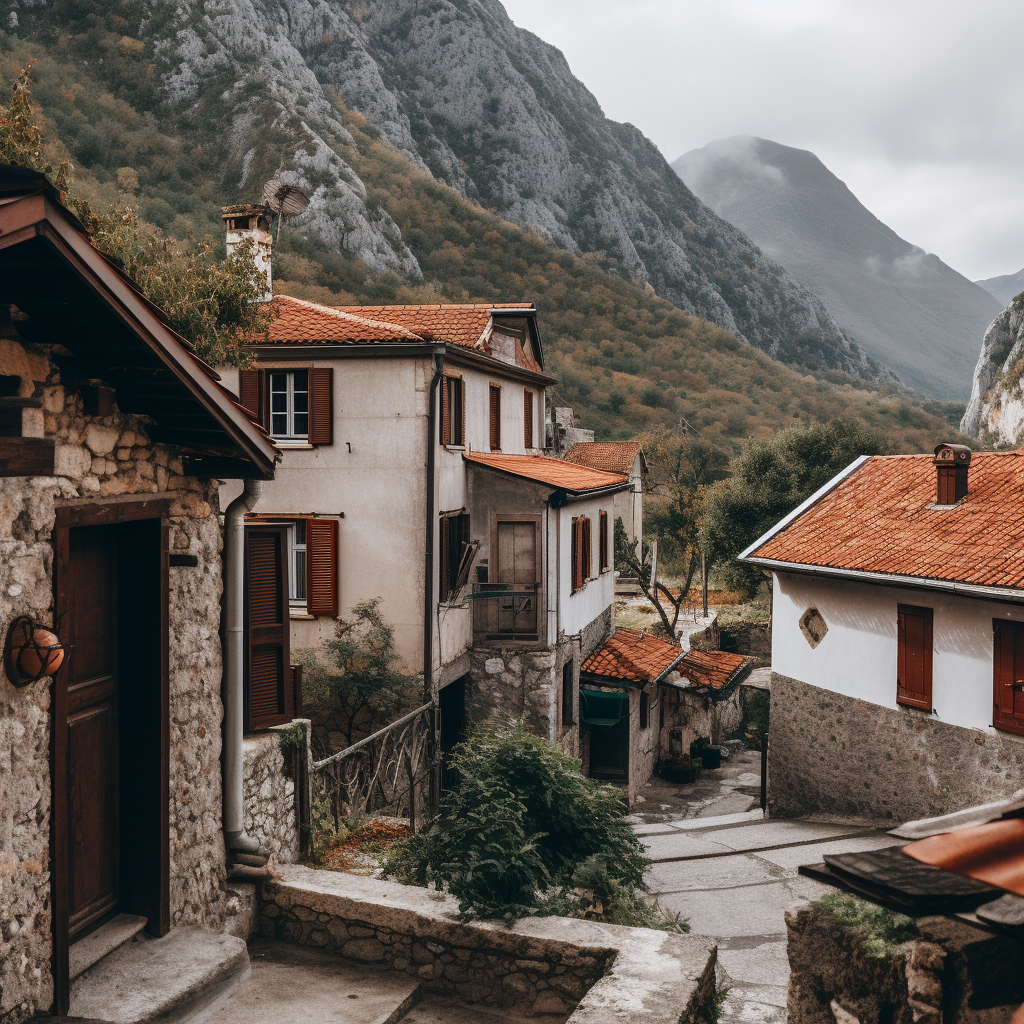Nestled along the Adriatic coast, Budva stands as a testament to centuries of architectural evolution and cultural heritage. This city, one of the oldest on the Adriatic Sea, boasts a rich tapestry of historical buildings that reflect a myriad of influences from Venetian to Ottoman. This article delves into how Budva’s architectural masterpieces not only enrich its cultural identity but also play a pivotal role in shaping the real estate landscape, offering a unique blend of history and modernity to residents and investors alike.
Architectural Masterpieces of Budva
Budva’s architectural landscape serves as a testament to the city’s rich and storied history, with each building offering a glimpse into its past and cultural heritage. From the imposing medieval fortifications of the Old Town to the graceful lines of Venetian palaces, Budva’s architectural masterpieces weave a captivating tapestry of styles and influences that have shaped the city’s skyline over the centuries.
At the heart of Budva lies the Citadel, a formidable fortress that has stood sentinel over the city for centuries. Originally constructed by the Byzantines and later fortified by the Venetians, the Citadel’s towering walls and bastions offer a striking example of military architecture from the Middle Ages. Today, the Citadel serves as a cultural hub, housing museums, galleries, and outdoor theaters, while also providing panoramic views of the Adriatic Sea and the surrounding coastline.
Venturing further into the labyrinthine streets of the Old Town, visitors encounter a wealth of architectural treasures, each bearing witness to Budva’s multicultural heritage. The Church of Santa Maria in Punta, dating back to the 9th century, is among the oldest churches in Budva, with its simple yet elegant design reflecting early Byzantine influences. Nearby, the Sahat Kula, or Clock Tower, stands as a symbol of Ottoman rule in Budva, its distinctive silhouette dominating the city’s skyline and serving as a reminder of Budva’s diverse past.
Preservation and Restoration Efforts
In the bustling heart of Budva, where ancient stones whisper tales of centuries past, lies a fervent commitment to preserving and restoring the city’s architectural treasures. Recognizing the intrinsic value of Budva’s historical identity, local authorities and cultural organizations have embarked on a journey of preservation and restoration that is as vital as it is ambitious.
At the forefront of these efforts is the restoration of the Old Town walls, a formidable barrier that once protected Budva from invaders and now stands as a symbol of resilience and endurance. Through meticulous conservation and reconstruction, these ancient fortifications are being safeguarded for future generations, ensuring that Budva’s medieval charm remains intact.
Similarly, the renovation of the Church of St. John, a jewel in Budva’s architectural crown, exemplifies the city’s dedication to preserving its religious and cultural heritage. Dating back to the 12th century, this sacred site has undergone extensive restoration to revive its original grandeur, with painstaking attention to detail ensuring that its intricate frescoes and ornate interiors are preserved for posterity.
Integration of Historical Buildings in Real Estate Development
In the dynamic landscape of Budva’s real estate development, the integration of historical buildings stands as a testament to the city’s reverence for its past and its forward-looking vision for the future. With an eye toward preservation and sustainability, developers have embarked on a journey of adaptive reuse, breathing new life into centuries-old structures and seamlessly integrating them into modern urban environments.
- These adaptive reuse projects represent a harmonious fusion of heritage preservation and innovative design, where ancient stone walls and timeworn facades serve as the canvas for contemporary architectural interventions. From the transformation of historic palaces into luxurious residences to the conversion of medieval warehouses into chic boutiques and co-working spaces, these projects celebrate the rich tapestry of Budva’s architectural heritage while catering to the demands of modern living and commerce.
- One such example is the restoration and conversion of the Palace Radonjić into a boutique hotel, where guests can immerse themselves in the ambiance of a bygone era while enjoying the comforts of modern amenities. With its vaulted ceilings, ornate stonework, and panoramic views of the Adriatic Sea, the hotel offers a unique and unforgettable experience that captures the essence of Budva’s historical charm.
- Similarly, the adaptation of the Kotor Gate into a mixed-use development, featuring luxury apartments, artisanal shops, and cultural spaces, exemplifies Budva’s commitment to sustainable urban renewal and cultural revitalization. By repurposing these iconic landmarks, developers not only preserve Budva’s architectural heritage but also create vibrant hubs of activity that contribute to the city’s economic vitality and cultural vibrancy.
Attractiveness of Historical Properties in Budva’s Real Estate Market
In the vibrant mosaic of Budva’s real estate market, historical properties stand as timeless symbols of the city’s illustrious past and enduring allure. Their architectural grandeur and rich history beckon buyers and investors alike, offering a tantalizing glimpse into a bygone era while promising a lifestyle infused with charm and prestige.
One of the key attractions of historical properties in Budva is their unique architectural features, which bear the imprint of centuries-old craftsmanship and design. From intricately carved stone facades to soaring vaulted ceilings, these properties exude a sense of timeless elegance and sophistication that is unmatched by their modern counterparts. Owning a historical property in Budva is not just about acquiring real estate; it’s about becoming the custodian of a living piece of history, steeped in tradition and imbued with stories of generations past.
Moreover, the allure of historical properties extends beyond their aesthetic appeal to encompass their investment potential. With Budva’s status as a premier tourist destination, historical properties often offer lucrative opportunities for tourism-related income, whether through vacation rentals, boutique hotels, or cultural attractions. The allure of owning a piece of Budva’s history while capitalizing on its thriving tourism industry is a compelling proposition for savvy investors seeking both financial returns and cultural significance.
Also, we advise you to read our other article, where we talked about property for sale.
FAQ
Some notable architectural landmarks in Budva include the medieval stone walls of the Old Town, the Venetian palaces, the Citadel, the Church of Santa Maria in Punta, and the Sahat Kula (Clock Tower).
Each building in Budva tells a story of the city’s past, showcasing architectural styles that span centuries and reflecting influences from Byzantine, Venetian, and Ottoman cultures.
Budva’s architectural heritage is significant due to its diverse range of styles and influences, drawing visitors and historians from around the world and contributing to the city’s cultural identity.

